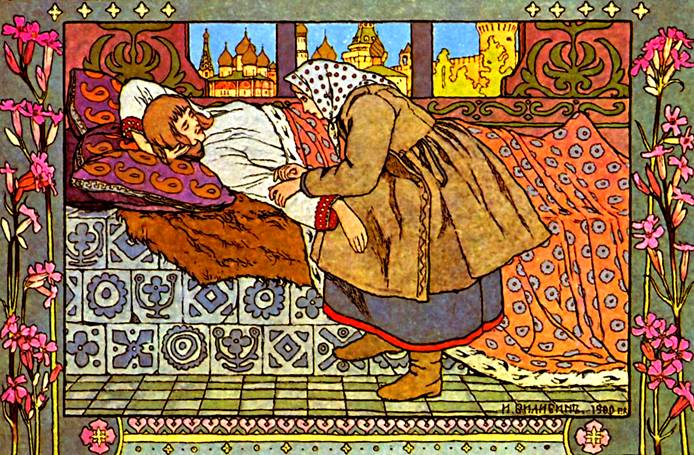So, as always, there are some versions of Beauty and the Beast with unhappy endings in Beauty and the Beast Tales From Around the World
The most familiar tale with an unhappy ending will be Madame d'Aulnoy's Le Mouton (in French) or The Ram (in English) which is thought to have partially inspired Villeneuve's original Beauty and the Beast story. The tale is also known as The Wonderful Sheep in Andrew Lang's Fairy Book.
That tale, in Lang's version ends like this:
She threw herself out of the chariot and ran to him, crying bitterly, for she realized that her broken promise had cost him his life, and for a long, long time she was so unhappy that they thought she would have died too.
So you see that even a princess is not always happy-- especially if she forgets to keep her word; and the greatest misfortunes often happen to people just as they think they have obtained their heart's desires!
Another translation is just a preachy:
The king and Merveilleuse in the meanwhile were not aware of the sad tragedy that had just taken place. He proposed to his daughter to ride in a coach, so that all the town might see her by the light of the thousand torches in the windows and in the great squares. But what a sight did she see on her way out of the palace--her dear ram stretched on the pavement, all the life gone out of him! Throwing herself out of the coach, she ran to him, weeping and groaning for she knew her delay had caused the death of the royal ram. In her despair, she was like to die herself.
This was taken as a striking example, therefore, that people of the highest rank are subject, like others, to fortune's blows, and that often the worst luck comes to them just when they think all their wishes are about to be fulfilled.
It's amusing, is it not, that Villeneuve in some ways rewrote Aulnoy's tale to give us a happy ending? 18th century fan fiction? Not really, but it's fun to imagine.
Another unhappy ending in the collection comes from South Africa and The Story of Long Snake.
They went out of the house that the bridegroom might sleep in it. While he was eating, the people of the village piled up bundles of grass, and the bridegroom was burned in the house. In this manner he died.
This one, in truth, is not so sad since the heroine is not interested in keeping her bridegroom. He is a snake and there is no hint that he will be disenchanted.
Long Snake, however, is reminiscent of another Animal Bridegroom tale with an unhappy ending, Eglė the Queen of Serpents. There is not a version of this tale in Beauty and the Beast Tales From Around the World
The Lithuanian tale, a popular one, is about Eglė who marries a serpent. She bears him children and is quite happy with him. However, one day she visits her family, and while she is separated from her husband, her brothers kill her husband out of fear and disgust. From Wikipedia:
After meeting the long lost family members, Eglė's relatives do not wish to let them back to the sea and decide to kill Žilvinas. His sons are forced by Eglė's brothers to tell the secret calling of their father. The boys are threatened and beaten by their uncles, however they remain silent and do not betray their father. Finally, a frightened daughter discloses it:
"Žilvinas, dear Žilvinas,
If alive – may the sea foam milk
If dead – may the sea foam blood…"
The twelve brothers call Žilvinas the Serpent from the sea and kill him using scythes.
Worried Eglė calls her husband, but unfortunately only foams of blood return from the sea. When Eglė discovers that her beloved is dead, as a punishment for betrayal she turns her children and herself into trees. The sons were turned into strong trees, an oak, ash and birch, whereas the daughter was turned into a common aspen. Finally, Eglė transformed herself into a spruce.
Finally, the third and final unhappy ending in Beauty and the Beast Tales From Around the World
It is a short tale and is a straightforward ATU 425C (Beauty and the Beast) tale. But it is especially abbreviated for it ends like this:
After spending another night at the castle, the father returned home. The girl remained and soon began to enjoy the castle. She discovered all that she could desire, each day there were music concerts and nothing was forgotten for her entertainment.
However, her mother and her sisters were filled with anxiety. They said, “Where is our poor child?” and “Where is our sister?”
The father, upon his return, at first would not tell what had transpired, but in the end he yielded to their entreaties and told them where he had left his daughter.
One of the eldest visited the sister and asked her what had happened. The girl resisted for a long time, but her sister persisted and ultimately she revealed her secret.
Immediately, they heard horrible screams. The girl stood up, shuddering with fright. As soon as she went outside, the white wolf came to die at her feet. She then comprehended her mistake, but it was too late and she was unhappy for the rest of her life.
That one is particularly brutal for she has no second chances, no way to redeem herself for simply revealing the secret which most tales in this group provide so she can find redemption. Which makes it all the more fascinating.

























